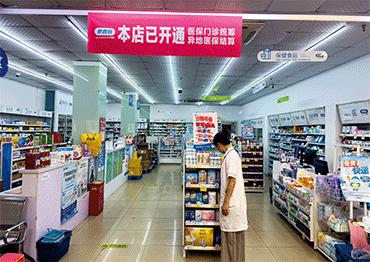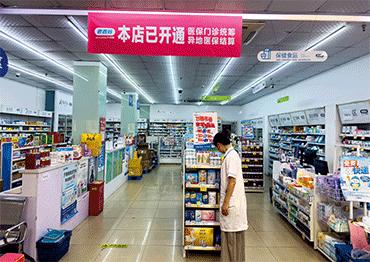According to Shuyu Pingmin’s fiscal report, another reason behind its declining profit is the government’s revision to the social health insurance policy.
By the end of 2023, about 73 percent of retail pharmacies nationwide were allowed to sell medications to patients and claim from the social insurance system.
The health insurance system has two parts: individual accounts, mainly funded by personal contributions, and comprehensive social accounts, mainly funded by the government. Funds from individual accounts can be used to buy medications at pharmacies covered by the social insurance system.
In February 2023, the government decided to reform the system, transferring some individual payments into comprehensive social accounts to increase reimbursements to hospitals and clinics. Though the reform reduced the scope of individual payment accounts, it allowed appointed pharmacies to claim from comprehensive social accounts for medications prescribed from a public hospital.
It was believed the change would help retail pharmacies develop, yet hospitals, which had been prescribing drugs themselves, are reluctant to transfer their prescriptions to outside pharmacies.
“Hospitals all have their own pharmacies and they have formed a complete closed loop, from prescribing to offering drugs,” Li Zihao, a researcher at the Institute of the China Medical Pharmaceutical Material Association, told NewsChina.
A 2023 survey by SinoHealth-CMH showed how the new insurance rules affected implementation of the social medical insurance policy by region, which influences how many hospital prescriptions retail pharmacies are able to fill. In Changsha, where hospitals were more willing to allow outside pharmacies to fill prescriptions, there was a 20-30 percent increase in customers of retail pharmacies on average year-on-year, with a 10-30 percent increase in sales volume. In Dalian, Northeast China’s Liaoning Province, hospitals are reluctant to transfer prescriptions, and pharmacies on average saw a 50 percent plunge in customer flow and a 30 percent decrease in sales volume, directly impacted by the narrowed individual fund.
Furthermore, as health authorities continue to add more medications to the national central procurement list at low prices, hospitals are taking patients from pharmacies.
“Middle-aged and elderly people prefer medications from community clinics, and younger people like [the convenience of] buying online,” Huang said. Online pharmacies can prescribe drugs with a hospital prescription, or they offer an online certified physician to prescribe drugs.
In another blow to the sector, the government has capped the retail price of drugs covered by central procurement, decreasing profits even more. Huang said some pharmacy operators told him that even a 15 percent profit margin cannot cover operating costs.
Some chains, including listed ones, have begun to merge or close unprofitable stores. “From what I know, one company with over 10,000 stores had planned to close about 2,000 this year (in 2024),” Huang said.
“Most of the closed stores were new ones opened this year (in 2024) or last year, since they have fewer VIP members [who have loyalty cards that offer discounts] and still need a long time to make a profit,” he added. It used to take a new outlet a year or two on average to turn a profit, but he found that many new stores are only making 600-1,500 yuan (US$84-211) in daily sales.
Yan Hui (pseudonym) who has worked in the retail drug sector for years, told NewsChina that there are too many pharmacy outlets for the sector to sustain, and most big retail chains do not have plans to expand.
According to figures from SinoHealth-CMH at the end of 2023, Chinese pharmacies serve about 2,100 people each, while those in the US and Japan serve about 4,000 each.
“Many less competitive pharmacies will close or merge. The era of reckless expansion has ended,” Yan said.

 Old Version
Old Version
